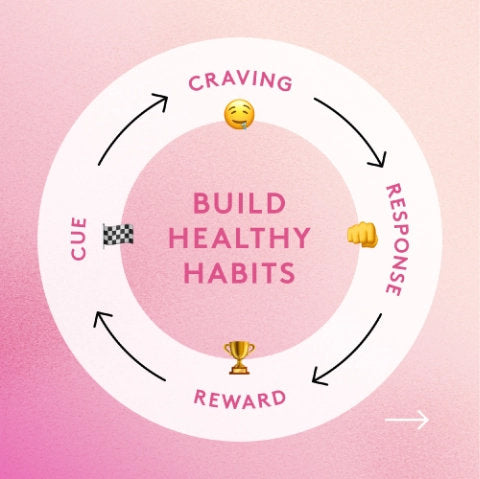Everything you need to know about the athletics and aesthetics of building a strong, powerful physique
Sculpting the perfect body isn’t easy.
You need the right lifestyle, the right diet. And you need to get with the program.
Whether you’re a bodybuilder working to get show-ready; an athlete looking for a competitive edge, or just a regular Joe shedding a few pounds before hitting the beach. The right training program is key to achieving your individual goals.
We've condensed thousands of hours of research into this handy guide. Giving you the tools you need to develop – and stick to – a program that will deliver the results you want. Next stop, ripped.
But first things first...
Without the right stimulus you will never achieve the strength, power and muscle mass you’re looking for.
Coaches can take decades to perfect a training program. Carefully tinkering and honing tiny details in pursuit of the optimum recipe for success.
Here we will share the essentials. The fundamentals that all effective training programs are based on. And every strong, functional physique depends on.
Muscle building essentials
To start we’ll look at some essential muscle-building points that you need to know:
- Progressive overload
- Volume load
- Full body vs. muscle splits
- Compound vs. isolation
- Rep ranges for developing muscle mass
- Training to complete muscle failure
Focus on the fundamentals. Getting the basics right will support the more advanced training like a strong foundation supports a solid brick wall
Every strong, muscular body you’ve ever seen was crafted on two things: dedication and the right training program.
There is no shortcut when it comes to building a head-turning physique that is as athletic as it is aesthetic. It takes blood, sweat and years.
But there is an important lesson to be learned from the professionals – knowing what works best for you.
It might be tempting to skip the basics so you can go in hard on the more advanced areas of muscle building.
Don’t.
Instead, regard this section as a primer.
And while it is true that the absolute best strength programs are built around the individual lifter. There are still several general rules that underpin them all.
Where most people fail is that they don’t appreciate the foundational aspects of their journey. So, it’s important to outline the most important elements of good strength training.
Follow these and you’ll notice big differences to your muscle size and power.
What is ‘progressive overload’ and why does it underpin successful muscle mass gains?
Back in 6th century Greece, a wrestler named Milo of Croton lifted a small calf up onto his shoulders as part of his training. The next day he did the same. And the next.
As the years passed, the calf grew in both size and weight. But because Milo lifted the beast daily, the small increases were barely noticeable.
Even as the bull matured into a 3,000 lb titan, Milo had trained himself to lift the weight over years and years of practice.
He got stronger and more muscular because his program had implemented small increases in weight on a regular basis – a process we know as progressive overload.

To develop muscle mass, you need to push your body beyond its habitual level. Progressive overload triggers adaptation with an unaccustomed stimulus
The story of Milo and the calf is likely a myth; but it does demonstrate exactly how progressive overload works. Rather than trying to make huge leaps with your training, it’s the small and more regular changes that provide the most powerful results.
Progress isn’t linear.
Takeaway: Striving to improve just a little bit each week is what progressive overload is all about. Even if it’s an extra rep here, or a little bit more weight there - your muscles will thank you.
During the second world war, a physiologist named Thomas DeLorme developed a strength program to rehabilitate soldiers using progressive overload1. And ever since then, bodybuilders and athletes have used it to get bigger and stronger.
How you can implement progressive overload into your training:
- Lift gradually heavier weights. Some weeks you’ll be able to add a couple of kilos to the bar; other weeks it might only be half a kilo. But striving to push your boundaries is key to developing both strength and size.
- Complete more reps. Even with the same load on the bar, more reps mean more of a stimulus for muscle growth.
- Perform more sets. Adding extra sets to your workout helps to trigger muscle growth.
- Adapting recovery time. Increasing rest time between sets typically allows you to lift heavier weights. For some exercises, reducing rest time helps to optimize the metabolic effect.
What is ‘volume load’ and why is it key to promoting muscle mass gains?
Getting stronger is a sure-fire way of developing more muscle mass. And as such, volume load is an effective way to monitor progressive overload and ensure you’re moving forward with your lifting.
Common methods of calculating volume load include counting the number of sets ‘to fatigue/ failure’. Or by multiplying the load lifted by reps performed (sets x reps x weight).
For example, if your squat routine was: eight sets x three reps @ 150 kg, your volume load for that lift would be 3,600 kg – (8 x 3 x 150 = 3,600).
Research has shown that higher volume loads lead to better muscle growth – most likely due to multiple sets being more effective than single bets2.
And while volume load methods might not factor in important aspects such as the degree of mechanical stimulus or duration of time in which muscle fibers are activated. It still provides a simple way to chart progress.
It’s worth noting that some exercises will provide higher volume loads compared to others. For example, there’s no way is anyone lifting 150 kg on bicep curls.
Volume load is only meaningful when you compare the lift with itself. Don’t compare between exercises as the transfer effect is minimal.
Record your total volume load and try to increase it on a monthly basis. Even small changes make a big difference
Are full body workouts vs. muscle splits superior for muscle growth?
For years and years, it was common for bodybuilders to visit the gym and train just one or two muscle groups per workout. For example, they’d hit the weights room for ‘leg day’ on Monday, ‘Chest day’ on Wednesday and so on.
These became known as ‘bro-splits’.
The idea was that by performing huge amounts of volume on a specific muscle, the progressive overload dial would be switched up to maximum and muscle growth would be through the roof.
And it worked.
But new research might show that muscle splits aren’t the most efficient way to grow mass.
Let’s say that on ‘chest day’ you perform 15 sets in total across the whole workout. You then don’t train that muscle again until the following week, because that’s what split-training does (plus, you’d be too sore to slam in another chest workout for a few days after).
So, you’d have actually lifted 15 sets for chest across the week.
Now imagine performing five sets on Monday, five on Wednesday and another five on Friday.
That’s still 15 sets per week.
But the ‘dose’ has been split into less intense but more regular workouts. And that allows you to train other muscles in the same workouts too – what we call full-body workouts.
Research has shown that when two groups of lifters perform either a muscle split or total-body routine3, it’s the ones performing multiple muscle group exercises in each workout that achieve superior results.
Takeaway: Less volume per session and more across the week is key to developing muscle mass and strength.

The benefits of full-body workouts include:
- Less muscle soreness.
- If you miss a workout you don’t have to wait a full week to train that muscle again.
- Potential to maximize volume load due to lower levels of individual muscle fatigue.
Unless you’re consistently doing four or more strength workouts per week, aim for two to three weekly full-body workouts to optimize muscle mass results
Compound vs. isolation exercises for mass?
Once you’ve worked out how many times you can hit the gym - and whether you’re shooting for a full-body blitz or a ‘bro-split’ bodybuilder approach. The next thing to do is populate your spreadsheet with exercises.
All strength lifts fall into one of two categories: compound and isolation.
Compound involve more than one joint movement and therefore multiple muscle groups. Isolation involve just one joint movement and therefore single (or a small number of) muscle groups.
An example compound exercise would be the bench press. This involves horizontal flexion of the shoulder girdle, activating your pectoral muscles. But also involves extension of the elbow, so your triceps switch on too.
Whereas the bicep curl only involves elbow flexion and therefore isolates the bicep muscle.
Note: There’s an emerging argument that no exercises are truly ‘isolation’ because every exercise will activate more than one muscle group to a degree. But for simplicity we’ll stick with these definitions for now.
The bulk of your lifts should be compound. Adding these earlier in the program when you’re fresh and unfatigued helps you lift more total load – and as such, up your volume load.
Deadlifts, presses, squats and pulls are all great choices here.
Research shows that compound and isolation exercises are both as effective as each other4 for promoting muscle mass and strength gains. And while this study looked specifically at untrained men, trained lifters can also benefit from adding isolation exercises to their lifting program.
While compound exercises are the atom bombs of heavy lifting, isolation exercises are the silent snipers. You can’t lift as much weight and they don’t hit as many muscles. But what they do better than anything else is zone in on specific muscle groups and help to build mass, balance and a killer physique.
To develop muscle mass, focus on compound exercises for the bulk of your program. But don’t neglect isolation lifts as they’re important too
How many reps to build muscle?
Rewind a few years and coaches and lifters would agree that the best way to build mass was to stick to a narrow 8 - 12 reps or so. The thought was, going heavier or lighter than that would take you out of the optimum stimulus range for muscle growth.
In other words, a continuum existed where heavier weights were used to build strength but not mass; lighter weights were used to build endurance but not mass; and the middle ground provided the sweet spot for optimum muscle gains.
We’ve moved on since then.
Thanks to more modern research, we now know that you can build muscle mass at pretty much any rep range5.
It seems that lighter loads might be more beneficial to less experienced lifters compared to full-on gym-bros - because newbies need a lower minimum threshold to stimulate growth.
But muscle mass can be achieved at lower loads by everyone, as long as volume load follows a progressive overload pattern.
It is important to note that heavier loads are still more effective for strength than light loads. Whereas endurance is better with more reps and lighter weights.
Takeaway: So, changing the rep range every few weeks is a good idea for a more holistic muscle performance. Some weeks you can focus on strength and mass by lifting heavy. Other weeks you can ease off the load and go lighter for endurance - but still trigger mass gains.
Vary your rep counts periodically to target the full range of muscle fibers. That way you leave no stone unturned in your quest for more mass
Should you train to muscle failure?
There’s a big difference between pushing yourself your body out of its comfort zone and annihilating your muscle fibers.
The old school method saw you aiming to crank out as many reps as you could until you reached the point where you physically couldn’t complete another rep.
The fatigue of your nervous system would combine with the accumulation of metabolites in the muscle, impairing contraction to the point where you just couldn’t grind out another rep, no matter how hard you tried.
This is known as muscular failure.
As a muscle building tool, it kinda makes sense in theory… You train to the point where you maximally overload your muscle and you’ll get better results, right?
Well actually, no you won’t. Thankfully.
One study on men performing arm curls (to 85% of their max) compared one group training to the point of fatigue with another group training to complete muscle failure. Results revealed that both grew similar bicep muscle mass6.
Even experienced lifters can make appreciable gains in mass without going to complete failure too. This is most likely because it negatively impacts performance in the following sets7 and therefore reduces total volume load.
Here’s what you need to know about failure v non-failure for muscle mass:
- The lighter the weight you lift, the closer you should go to failure. In order to activate high-threshold fibers, closer proximity to failure might be beneficial.
- The latest evidence shows that stopping 2-3 reps before complete failure will still build mass.
- Training to failure increases risk of injury.
- Training to failure takes longer to recover from. Which can negatively impact on following workouts if you’re taking a full-body approach.
- If you choose to train to failure, do so sparingly.
Planning your program
Now you’re ready to hit the gym, let’s take a closer look at building a program to suit your individual goals:
- Picking the best program for you
- Example programs based on frequency
Before you start to consider exercise selection or rep ranges, you need to think honestly about how many workouts you’ll manage each week.
A program will only work if you set your goals out clearly and realistically. There’s no point in promising yourself you’ll hit the gym five times per week when you’ll struggle to even make two sessions.
It’s important to get this right as training frequency can drastically affect the design of your program.
Picking the best program for you
There are a few basic guidelines around the design of your program - led by how many times you’re hitting the gym.
The truth is that any program will build muscle mass. But the best program is one that helps you maximize results while minimizing fatigue - and the time you spend in the weights room. Because you have a life, after all, and the gym shouldn’t replace that.
Two to three sessions per week: Full-body workouts
If you’re planning on this number of gym sessions per week, stick to full-body workouts. That way you can still reach a high weekly volume load per muscle without having to cram multiple muscle group workouts into just a couple of sessions.
Not only is it time-efficient, it’s also the most effective mass building approach for that number of workouts.
Feel free to change up the exercises each week if you need to, but the same workout is fine. Although it is a good idea to change it after a few weeks to stop you getting bored and to maximize results.
Here’s an example of a good two to three sessions per week schedule:
Four sessions per week: Push-pull
If you’ve got the luxury of – and dedication for - four workouts per week, a full-body approach might not work. That’s because you’re not leaving enough recovery between workouts and eventually, that will take its toll.
Push-pull workouts are like full-body but split into blocks of push-dominant exercises and pull-dominant ones.
All you need is a Workout A and a Workout B. Perform each one twice per week.
Push exercises include anything where you drive the weight away from your body. For example:
Pull exercises include:
Five workouts or more: Push-pull legs/ muscle splits
If you’re planning on hitting the gym for five workouts each week, a full-body approach won’t work. And ush-pull might also be too taxing because there’s too much weekly volume and insufficient recovery.
So it’s time to consider muscle splits.
It really doesn’t matter how you split muscle groups up. Much of it is to do with logistics and personal preference. Here’s an example:
Notice how there are two leg workouts per week. This is vital to create a balanced, strong physique and avoid that tell-tale ‘he skips leg day’ look.
Example full-body workout plan
Here’s an example full-body workout to get you heading in the right direction. You can adapt it over time to suit your particular goals, but use this a basis and you will build solid muscle mass and strength.
- Bench press 3 x 8 reps
- Romanian deadlift 3 x 8
- Lat pulldown 3 x 10
- Overhead press 3 x 10
- Leg press 3 x 8
- Seated cable row 3 x 8
- Leg extension 3 x 12
- Dips 3 x 12
- Bicep curls 3 x 12
Takeaway…
If you’re serious about building a powerful muscular physique, you‘ve got to get with the program.
A training program that is realistic, manageable and tailored to suit your individual goals.
One that pushes your body beyond its normal levels, but not its limits. One that builds steadily and sensibly, targeting multiple muscle groups. And one that finds a balance to help you workout, rest and play.
References
- https://www.ncbi.nlm.nih.gov/pubmed/22592167
- https://www.ncbi.nlm.nih.gov/pubmed/20300012
- https://www.ncbi.nlm.nih.gov/pubmed/25932981
- https://www.ncbi.nlm.nih.gov/pmc/articles/PMC4592763/
- https://www.ncbi.nlm.nih.gov/pubmed/28834797
- https://onlinelibrary.wiley.com/doi/full/10.1111/sms.12445
- https://www.tandfonline.com/doi/abs/10.1080/02640414.2016.1210197
[article-cta-inline category="pre-1"][article-cta-sidebar category="pre-1"]












